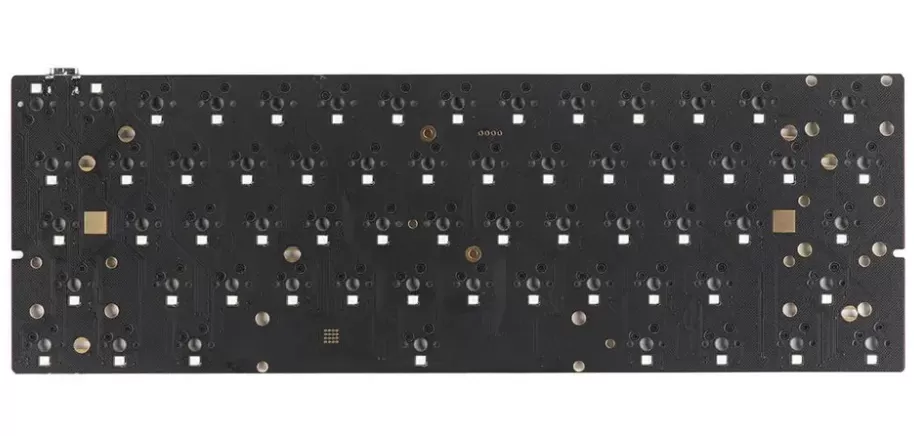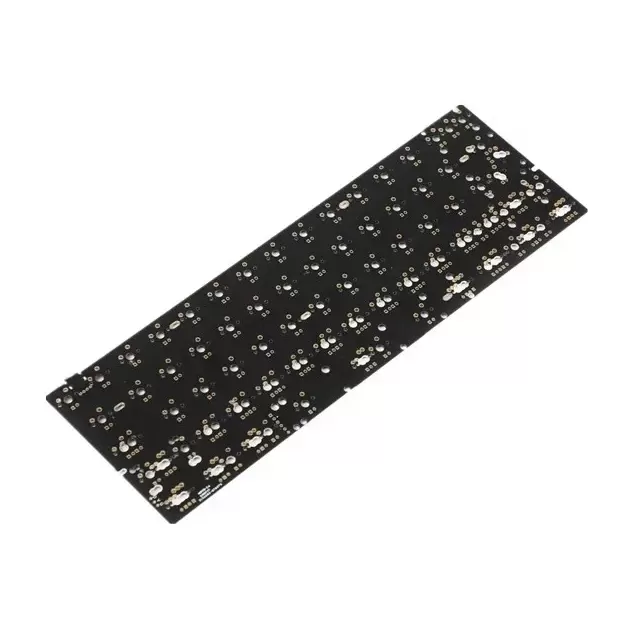What is Mechanical Keyboard PCB?
A Mechanical Keyboard PCB is a Printed Circuit Board that converts key presses into electrical signals and sends them to your computer. This can be accomplished by using various components on the board including switches, LEDs, and resistors.
Printed circuit boards designed for custom mechanical keyboards have a plate over them and switch pins soldered onto the PCB. These can be used with PCB-mounted or plate mount switches requiring a metal plate for additional support and stability.
The most common type of PCB for mechanical keyboards is the soldered style. This means that the assembler has to solder switches into the PCB while building the keyboard.
Many manufacturers offer hot-swappable PCBs with pre-installed switches that don’t need to be soldered. This is a great option for people who are new to the mechanical keyboard world and don’t want to invest in soldering equipment.
In addition, a PCB can also be made with holes that allow you to mount LEDs. Some PCBs will even allow you to add RGB lighting to the switches and keycaps!

What is the difference between plate-mount and PCB-mounted switches?
The switch type you choose can significantly impact your typing speed, accuracy, and comfort. There are mainly three types of switches on the market: Linear, Tactile, and Clicky. Each one provides different types of tactile feedback and a unique click.
The Main Difference between Mechanical and Membrane Keyboards
Both types of keyboards can be used for different purposes. However, the one that suits you best depends on a number of factors including your personal preference, type of use, portability and more.
Generally speaking, membrane keyboards are cheaper than their mechanical counterparts and are typically found in budget gaming keyboards, as well as with many pre-built PCs. They are also often portable and lightweight, so if you are looking for a compact or travel-friendly keyboard, they could be the best option.
Membrane switches actuate by pressing the bottom of a rubber dome sheet to depress the contacts underneath it. These contacts are then pressed by a conductive trace underneath the top layer of the membrane to allow current to flow.
Mechanical Keyboards Are Better For Precision And Tactility
A mechanical keyboard is characterized by its spring-loaded switches, which register the key pressed with a distinct click or snappy feeling when pressed. This allows for faster typing with greater accuracy and less typos.
Mechanical keyboards are also known to be more durable and have key rollover, which allows them to correctly detect multiple simultaneous inputs on the same keystroke, a feature that is often missing on membrane keyboards.
Choosing the right keyboard can level up your gaming experience and even help you set and break personal typing speed records. It’s no wonder that hardcore gamers opt for a mechanical keyboard, but if you can’t decide between membrane or mechanical, Razer has a Mecha-Membrane board that combines the soft, rubbery feel of a membrane switch with the tactile click of a mechanical switch.
How to Build Custom Mechanical Keyboards
Getting Started
The first step in building a custom mechanical keyboard is to pick the size you want. If you’re trying to build a more uncommon size, you will have to wait longer for the parts to arrive or order them separately from the manufacturer. However, if you have a more common layout, you can get it assembled relatively quickly and easily.
Sizing
Choosing the size of your keyboard is crucial in determining how much space you have to work with and how many keys you can fit on it. Keyboards come in several different sizes, from ultra-thin to super-wide (a full-size keyboard with a few inches of extra space).
Features
There are some basic features that you can add to your custom mechanical keyboard: RGB lighting, a split spacebar, and more. Some of these features are easy to implement, while others may require more patience and money.
Switches
Switches are what give your keyboard its unique feel and sound. They vary in smoothness, resistance, and noise levels, but there are three main types: linear, tactile, and clicky.
PCB
The PCB is the main body of your keyboard and is the point where the switches connect to. It can be soldered on or hot-swappable, which means you can pull out the switches and replace them with new ones without removing them from the board.

Stabilizers
A good set of stabilizers is vital to making your keyboard feel and sound its best. They reduce the vibrations of the larger keys and eliminate the rattle you sometimes hear when typing.
Mechanical Keyboard PCB Buying Considerations
PCB Buying Considerations
When you purchase a Mechanical Keyboard, you’re not just getting the switches and other components, you also get the PCB that lets them communicate with your computer. The PCB contains microswitches and sensors that send signals to your computer when you press a switch. The software in your keyboard interprets this data into a digital code that can be used to control what keys are lit up on the screen.
Choosing the PCB
When looking for a Mechanical Keyboard PCB, it’s important to find one that is designed specifically for this purpose. There are several options on the market, but it’s best to stick with a reputable manufacturer.

Plate Materials
The material of the plate that holds the switches in place can make a huge difference to how your Mechanical Keyboard feels and sounds. Many people prefer a rigid plate made from aluminum or brass for a solid typing experience, while others prefer a more flexible option for comfort.
Stabilizers
The type of stabilizers that are placed on the PCB can also affect how your keyboard will feel and sound. The most common stabilizers are Cherry and Costar, but there are other options available as well.
Purchasing the PCB and Case
When you’re ready to build your Mechanical Keyboard, it’s important to have all of the necessary hardware on hand. You’ll need a case and PCB that fit together, so make sure to check that they’re compatible with each other before making your purchase.

























